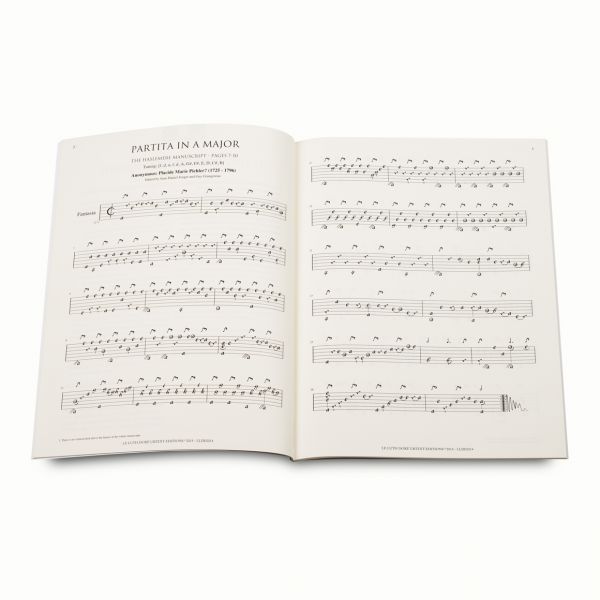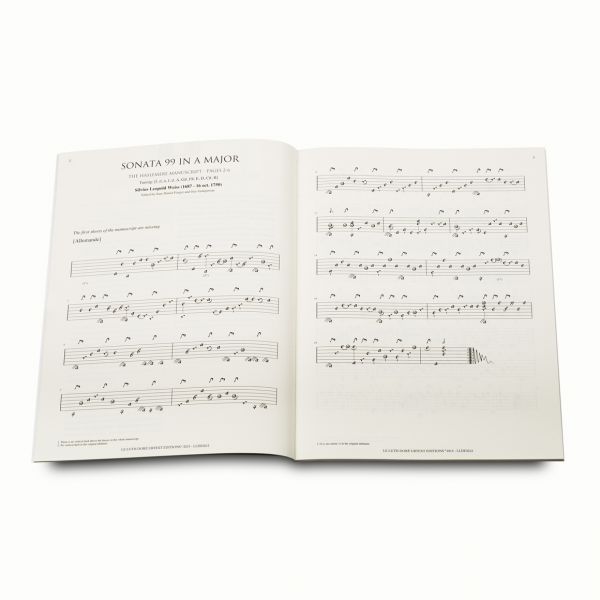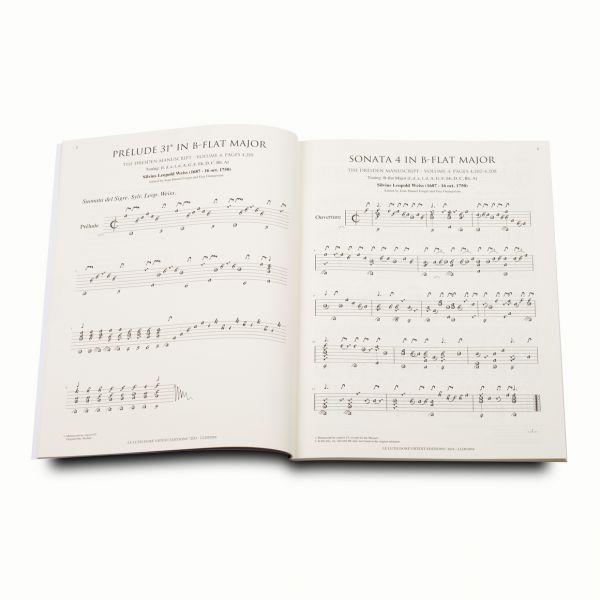The Brussels Manuscript
Baron's works are characterized by a baroque idiom heavily influenced by the galant style. Many are contained in a series of manuscript fascicles in French tablature, kept today at the Bibliothèque Royale Albert I of Brussels, under the reference B-Br Ms. II 4087. Some of these documents belonged to the publisher Breitkopf, who had ordered copies around 1760.
In the course of the 19th century, they were acquired by François‑Joseph Fétis, a musician, musicologist and Director of the Brussels Conservatory, who added them to the tablature collection he had already constituted.
The manuscript contains ten different sonatas for solo lute, a duet for transverse flute and lute and deux concertos for violin, lute and bass. Several pieces of one of the sonatas can also be found in the Haslemere manuscript, with the indication "Weiss". This, however, is considered most unlikely, and the entire sonata is attributed to Ernst Gottlieb Baron. Three of the manuscripts, written in a very clear and recognizable hand, are marked "LAVG", and thus associated with Luise Adelgunde Victorie von Gottsched.
Ernst Gottlieb Baron (1696-1760)
Ernst Gottlieb Baron was born on February 17 1696 in Breslau, the capital of Silesia.
Ernst Gottlieb took up the lute in his childhood. He knew the Weiss family, and in particular Sylvius Leopold, who was nine years older. He also frequented Gottfried Meüsel, his near-coeval, and the Kropffgans family.
In 1715, Ernst Gottlieb studied law and philosophy at the University of Leipzig. The city, however, was also a German musical capital, and it was above all the art of the lute that absorbed his talents, in the company of Anton Wilhelm Heinrich Gleitsmann.
In 1727, he lived in Nuremberg, where he wrote and published his famous treatise « Historisch-theoritisch und praktisch Untersuchung des Instruments der Lauten, usw. » This work covered the history of the lute, the theory of its music and the practice of the baroque lute, and is still considered a reference on the subject. Moreover, it is a precious source of information on lutenists of his time.
On May 12 1728, Ernst Gottlieb Baron was appointed lutenist at the Court of Saxe-Gotha-Altenburg, replacing his friend Gottfried Meüsel who had just died after falling off a horse. Five years later, however, he resumed his itinerant life-style, before settling for five years in Eisenach.
In 1737, Ernst Gottlieb Baron, again wandering from court to court (Mersebourg, Cöthen et Zerbst), was introduced to Frederick William I of Prussia. The Soldier King hired him as a theorbist in Berlin, and granted him permission to travel to Dresden to be given a théorbe by Sylvius Leopold Weiss. There, Baron had the pleasure, not only of hearing his friend and master, but of meeting several of his students: Wolfgang Adam Anton von Hoffer, Johann Kropffgans, his sister Johanna Eleonora and Timofei Bielogradski, a Circassian bandorist in the employ of the Russian Ambassador and to whom Weiss had taught the lute.
Ernst Gottlieb Baron kept his position at the Court of Prussia when Frederick II the Great replaced his father. As long as he lived, he taught and pursued his encyclopedic research into the lute and its music.
He died in Berlin on April 12 1760.
Jean‐Daniel Forget | Le Luth Doré ©2015


















































